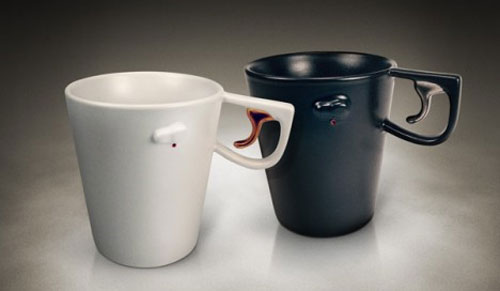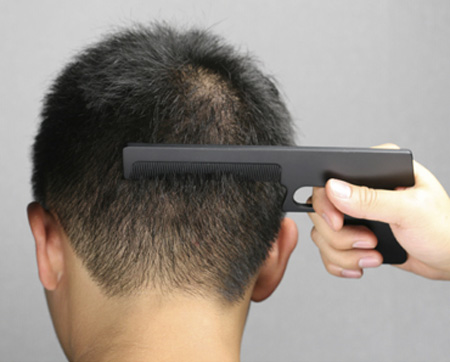CHANGES IN DESIGN
What's new in design area?
During the last 10 years, design industry has changed hugely. The change happens in both the industry and the life of a designer. The author has changed from a graphic designer, to a interaction designer, to a design agency director, which have all broadened her field where she works on. At some point it felt like the design organization is getting in the way, as the designers were trying to correspond to the needs of the customers. It seemed that the designers' brains were very good at understanding complex problems and redesigning systems, and more and more designers are moving towards that.
The steps the author sees are crucial for design are styling, form and function, problem solving and framing. The more complex the problem is, the more a latter stage comes important in the process. All four of the stages are essential for great projects. But styling is certainly crucial, as an ugly object doesn't give the impact needed.
Another way the design has changed is from working alone, to working in a group inside one discipline, into cross-discipline teamwork. The need for that is based on increasingly complex problems, and have top level understanding of the needed disciplines, if possible.
Yet another change happens in the design cycle. Traditionally, the project moved from one stage to other, from one discipline to other. Currently, the project is worked by all participating parts and disciplines simultaneously, tied by interaction. It is also appearing that in the newer design areas, for example service design, cross disciplinary and complexity is much higher than in more traditional kinds of design. Companies of social innovation spring up, being a perfect combination of business, technology and design. Design is coming to be embedded in areas that would never have been considered before, and have an opportunity to make real difference.
---------------------------------------------------------------------------------------------
Exercise:
Look for a sign (gesture, drawing, music, object, clothing, jewel, food or other) that changes in various contexts its semantic/symbolic meaning. Visualize, analyze.
Example in class:
The gun
Different contexts:
Scaramanga’s golden gun
Peter Gronquist – Fashion Revolution with Designer Weapons
Chanel, Gun Shoe – Platform sandal in satin on a 90 mm gun heel
Ted Noten, Lady-K-Bag – engraved and heavily gold-plated gun and bullet, textile, chrome steel.
Philippe Starck, Gun Lamp
Continuous examples:
As I'm fascinated about the theme of gun in design, I have gathered more examples of the motive's use which I would like to share:
Another example from Ted Noten - Chanel001 and Dior001 gun makeup kits. The black Chanel001 comes with an 18k gold toothpick, a perfume bottle with an 18k gold mechanism, a USB stick, an antique hairpin, a Viagra pill, and of course, Chanel lip gloss. Alternatively, Dior001 conceals Dior lip gloss, a USB stick harboring “secret information,” a 100-gram sterling silver bar, a hair pin, and a special compartment for loading a lady’s “pharmaceuticals.”
Chanel, Gun Shoe – Platform sandal in satin on a 90 mm gun heel
Ted Noten, Lady-K-Bag – engraved and heavily gold-plated gun and bullet, textile, chrome steel.
Philippe Starck, Gun Lamp
Continuous examples:
As I'm fascinated about the theme of gun in design, I have gathered more examples of the motive's use which I would like to share:
Another example from Ted Noten - Chanel001 and Dior001 gun makeup kits. The black Chanel001 comes with an 18k gold toothpick, a perfume bottle with an 18k gold mechanism, a USB stick, an antique hairpin, a Viagra pill, and of course, Chanel lip gloss. Alternatively, Dior001 conceals Dior lip gloss, a USB stick harboring “secret information,” a 100-gram sterling silver bar, a hair pin, and a special compartment for loading a lady’s “pharmaceuticals.”
.357 Magnum Gun Hair Dryer from Jerdon - the idea of pointing a gun towards your head is just so 'sic'! Even if it's just for drying your hair.
Let's Talk It Over Teapot with a pistol handle by Dennis Shields- play of contrasts, as tea time should be a break, time for peace, and then rising tension with a black pot with gun handle. Is the tea poisoned? The offerer of the tea has power over the one who drinks it.
Gun shaped door handles by Nikita Kovalev - door handles where you have to pull the trigger to open the door.
T-shirt with printed gun by Atypyk
Kill Time Coffe Mug by ChilliChilly - get a shot... of coffe!
Povodokus, retractable dog snap leash by Art Lebedev Studio - the vision of a person pointing a gun to a restricted animal brings out strong emotions, of which we wouldn't think of without the strong symbol.
The gun comb by Lee Weilang from afteraindesign
BANG! lamp by bitplay INC. - the lamp activates and turns off by using the pistol-shaped remote. Moreover, when the lamp is "shot" to turned off, the cover seems to jump out of place, like it "got shot".

Water gun (any) - it's just a toy!?
Let's Talk It Over Teapot with a pistol handle by Dennis Shields- play of contrasts, as tea time should be a break, time for peace, and then rising tension with a black pot with gun handle. Is the tea poisoned? The offerer of the tea has power over the one who drinks it.
Gun shaped door handles by Nikita Kovalev - door handles where you have to pull the trigger to open the door.
T-shirt with printed gun by Atypyk
Kill Time Coffe Mug by ChilliChilly - get a shot... of coffe!
Povodokus, retractable dog snap leash by Art Lebedev Studio - the vision of a person pointing a gun to a restricted animal brings out strong emotions, of which we wouldn't think of without the strong symbol.
The gun comb by Lee Weilang from afteraindesign
BANG! lamp by bitplay INC. - the lamp activates and turns off by using the pistol-shaped remote. Moreover, when the lamp is "shot" to turned off, the cover seems to jump out of place, like it "got shot".

Water gun (any) - it's just a toy!?













